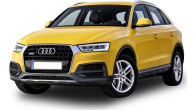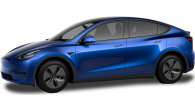Australia really likes hybrids. Why wouldn’t we? They’re fuel efficient, lower our emissions, offer some of the smoothness of electric vehicles while maintaining the range which comes with combustion, and ones like the Mitsubishi Outlander which can be plugged in can even drive some distance using no fuel at all.
But we also like travelling beyond the tarmac, onto dirt, gravel, and mud, seeking campgrounds, fishing spots, or adventure beyond.
Some of you might be wondering, then, is a hybrid system a help or a hindrance in these situations? We had an opportunity to test out Mitsubishi’s Outlander PHEV in conditions you would normally only ever take a proper 4x4 in to find out.
Mitsubishi Outlander 2023: Phev Exceed Tour 5+2 St (Awd)
| Engine Type | Inline 4, 2.4L |
|---|---|
| Fuel Type | Premium Unleaded/Electric |
| Fuel Efficiency | 1.5L/100km (combined) |
| Seating | 7 |
| Price From | $58,630 - $67,430 |
| Safety Rating |
|
Price and features – Does it represent good value for the price? What features does it come with?
The cars we specifically drove for this test wear Japanese plates, and we had the opportunity to drive one right-hand drive model specified for the Australian market, one left-hand drive example, and one development mule from before the launch, which the Mitsubishi test crew had managed to accrue close to 500,000km on.
We were also testing the vehicles at Mitsubishi’s own Tokachi proving ground in Hokkaido, Japan, a fascinating insight into what kinds of conditions the Outlander PHEV was developed under.
When it comes to pricing, an Outlander PHEV can be had from $55,590 in Australia for the base ES model (in my opinion, the best value PHEV in Australia right now, despite some significant spec omissions), to a top of $69,990 for the Exceed Tourer grade.
.jpg)
All versions get the same 2.4-litre engine and dual electric motor all-wheel drive set-up we tested here, with the main difference to the car’s ability being its wheel size.
Interestingly, the example we tested was more reflective of an Exceed spec ($67,490 locally) complete with the 20-inch wheels and tarmac tyres which would not be an ideal choice for the kinds of conditions we put it up against in this test.
The Mitsubsihi and its particular interpretation of a PHEV system is significantly different from some of its local rivals, which include the front-wheel drive MG HS +EV (from $46,690) and Ford Escape ST-Line PHEV (from $54,940).
.jpg)
For all-wheel drive and something with a similar cabin size to our Outlander here, you will actually need to spend significantly more to get into the Kia Sorento GT-Line PHEV, which starts from a whopping $81,080, at which point you might as well also consider the Lexus NH 450h+ (from $90,923).
Now you have an idea of the lay of the plug-in hybrid land, it’s a bit easier to see Mitsubishi has deliberately placed itself here to try and make the tech more appealing to those considering a hybrid despite it costing nearly $17,000 more than the equivalent petrol version.
Highlights for the standard ES grade include LED headlights, a digital instrument cluster, 18-inch alloy wheels, a 9.0-inch multimedia touchscreen with Apple CarPlay and Android Auto, push-start ignition, and most of the available active safety items.
.jpg)
Not so good on the ES is the basic cloth seat trim, polyurethane steering wheel, and lack of some basic items like keyless entry.
Oh, and for some reason the ES is a five-seat proposition only. You can get a seven-seat PHEV, but you’ll need to pay more for the Exceed grade.
Obviously something has to give to keep the price so low for the entry ES, and if you work your way up the range, the missing key items re-appear very quickly.
For more, make sure to check out Richard Berry’s launch review and long-term instalments for how the Outlander PHEV behaves on the road as a family car.
Design - Is there anything interesting about its design?
The Outlander looks tough and is the first model in Mitsubishi’s local line-up to wear the new version of its ‘Dynamic Shield’ styling language, complete with a (finally) entirely new interior.
Inside and outside, the look and feel has come leaps and bounds from the previous Outlander which arguably outstayed its welcome in the Australian market, especially when it came to its ancient interior styling.
The new Outlander is also significantly larger than the previous car, with a mean, square stance, long wheelbase, and in higher grades, enormous wheels to complete the look.
.jpg)
It rides reasonably high, and visibility out of the cabin is excellent, both traits which should help it on our off-road escapade.
The interior is finished to a much higher standard than before, the new styling language clearly taking some queues from the likes of Land Rover with its plaid seat trim in higher grades, square cascading dash look, and glossy screens both for the digital dash (a surprising inclusion on base ES versions) and 9.0-inch multimedia touchscreen, which has basic but quick software.
.jpg)
Notably, there are useful readouts on the dash pertaining to the all-wheel drive system.
Some bits are iconically Mitsubishi, like all the rotary dials using the brand’s signature diamond pattern, and you’d be hard pressed to point out where this car aligns with the US-market Nissan Rogue with which it shares its underpinnings.
Suffice it to say we’re looking forward to more Mitsubishis using this new design language, because the Outlander nails it.

Practicality – How practical is its space and tech inside?
The Outlander’s expanded dimensions grant it a huge interior which punches above the mid-size segment when it comes to storage and space, and the inclusion of either an enormous boot space or seven-seat layout is especially rare for a plug-in hybrid, as the batteries usually eat up the required under-floor space in the back.
Setting it to a five-seat layout only reveals a huge amount of space for rear occupants, as does the nearly flat floor, which is possible thanks to the lack of a physical linkage heading from the engine in the front to the rear axle, all-wheel drive is achieved entirely with electric motors.
The seven-seat layout only being available on the top Exceed grade is of course a downside, but the trade-off is a huge boot, which weighs in at 485 litres - exactly what you want for adventures.
.jpg)
As an added bonus, the Outlander PHEV is also capable of outputting 1500W from its charging port’s V2L system, letting you power household appliances from the 20kWh battery.
A nice touch if you want to bring some of the niceties of civilization with you off the beaten track.
On the downside, however, there’s no spare wheel in any PHEV variant, making it somewhat risky to consider off-roading at all, let alone travelling to far flung locations without phone reception.
_0.jpg)
Under the bonnet – What are the key stats for its engine/motor?
This is where the Outlander really sets itself apart from rivals. It has one of the more interesting interpretations of hybrid drivetrain technology on the market.
Up front there’s a horizontally-mounted 2.4-litre four-cylinder petrol engine. There’s no turbocharger, and it runs on the Atkinson combustion cycle commonly used by hybrid models, which effectively trades power for efficiency.
The engine is capable of producing just 98kW and 195Nm which is not a lot for an engine with a 2.4-litre capacity.
Mitsubishi says the engine’s primary role is to act as a generator, and not to drive the wheels, although technically it will drive the front wheels under certain conditions
.jpg)
The primary driver is the dual electric motor set-up. The one on the front axle produces 85kW/255Nm, while the one on the rear is capable of producing 100kW/195Nm.
The three power sources combine to produce a peak 185kW/450Nm, not shabby at all for a family mid-sizer.
Usually, this is the point where you’re told the wheels are driven in the front via some electrified dual-clutch (Kia), torque converter (MG), or continuously variable unit (Toyota), but the Outlander actually has a unique single-speed two-stage reduction gear.
The first reduction gear brings the rpm of the electric motor down to reality, while the second matches it to the speed of an integrated differential system which on its other shaft accepts the rpm of the engine.
.jpg)
Complicated right? Somewhat understandably, Mitsubishi is a bit annoyed about this being simply mis-labelled a CVT, an easy misconception to make, as sometimes the revving of the engine can mimic its rubbery characteristic under acceleration.
In reality, though, the combustion engine can’t even drive the wheels until the car hits 70km/h as its RPM would be too low.
All driving below 70km/h is done solely with the electric motors, with the engine only acting as a generator to keep the battery topped up where required. The goal is, of course, fuel efficiency in any driving mode.
This begs the question, though - can a car which effectively functions as a fully electric vehicle at low speeds even work off-road? And what does that feel like?
Driving – What's it like to drive?
Mitsubishi offered the chance to drive its own off-road testing course at the Tokachi proving ground, which was surprising, firstly because the course looks like it is meant to test the likes of the Triton and Pajero, secondly because it had been rained on recently and was pretty chewed up by the Triton AXCR rally truck which had done the run before us.
The Outlander instantly proved impressive. Set to the ‘Mud’ drive setting, the mid-sizer pushed easily and in whisper silence through the mud and ruts.
Where petrol or diesel motors provide instant feedback when the going gets tough, by revs dropping or gears changing, the electric motors in the Outlander silently push through, giving the driver the impression they aren’t struggling at all.
.jpg)
Glancing at the ‘S-AWC’ screen, you can see the car’s computer constantly adjusting where it is sending the torque if it detects wheels struggling to push, or to where it thinks more traction is needed.
While the stock road tyres struggled a bit with ruts and scrabbled for traction on some inclines, the electric motors simply pushed through.
Surprisingly, most of the time the dial on the dash indicated only around 30 per cent of available power was required to push through even the deepest mud, with the engine only needing to assist on one or two occasions.
.jpg)
The steering is also very light, making it easy to make quick or significant wheel position adjustments on the fly, but it can also come at the cost of feel.
It was easy enough to feel out the front wheel position on hard packed mud or gravel, but it became much more ambiguous on the deeper, wet mud.
Although it was hard to tell from the driver’s seat, the car in front indicated clearance was surprisingly good in most scenarios.
.jpg)
A brave stepped decline showcased the descent control, although on these moguls I felt the car bottom out slightly on more than one occasion.
For the record, the departure and ramp-over angles are surprisingly good on this SUV, but the approach angle requires caution as it is no better than most family SUVs.
Scraping across a summit was a reminder of how the Outlander isn’t a true 4x4. While there’s no exposed drive shaft thanks to the electric 4x4 set-up, other expensive hardware (like, say, a huge 20kWh battery pack) could be vulnerable to damage to hard packed dirt, rocks, or gravel.
.jpg)
Certainly, if you’re venturing into tough terrain with a family SUV like this we recommend you exercise caution, even if the computer-controlled drive modes inspire confidence.
A short stint on a gravel track was also impressive, with the gravel setting sending the majority of power to the rear in order to curb potentially dangerous understeer.
For what you would assume to be a front-biased SUV, the Outlander could be quite tail-happy when pushed, although the heavy coarse-chip gravel we tested the pre-production car on also seemed a risky proposition when it comes to underbody protection.
.jpg)
As such, the pre-production car had significant additional anti-gravel flaps underneath for this purpose.
To sum up, the drive system is very impressive for pushing through adverse mud and gravel conditions, and offers an idea of what electrification will have to offer in proper off-road applications.
The computer does a lot of the work for you, requiring the driver to just hold the accelerator down and steer the car straight, as torque is sent to the necessary wheel on the fly with no additional input needed.
If you were considering using your Outlander in such trying terrain, however, I would caution you to not push it. While you might be surprised what this SUV can do, with no spare and limited clearance at the front, as well as potentially expensive hardware to damage underneath, take it easy.
Efficiency – What is its fuel consumption? What is its driving range? What is its charging time?
Efficiency of PHEVs will vary greatly depending on how they are driven and the state of charge used. The official fuel consumption figure for the Outlander PHEV is just 1.5L/100km, although this is on the more lenient NEDC testing standard, and assumes the car is used in ideal conditions with the battery fully charged.
Expect more like 5.0L/100km, with some reports as high as 8.0L/100km in combined cycle use. Again though, this will heavily depend.
Is it 300km of combined use with no charging? In that case 8.0L/100km is more likely. If you are doing 300km over several days charging the battery when possible, usage will be much lower.
.jpg)
One thing is certain, our Outlanders pushed through their 20kWh battery capacity very quickly on the off-road circuit, so expect consumption to spike if taken off the tarmac.
Thankfully, for situations like this the Outlander PHEV can actually charge itself using the 2.4-litre engine, so you can still make use of its V2L amenities at far-flung locations, at the cost of fuel.
.jpg)
As mentioned, the battery is a relatively large 20kWh allowing a claimed 84km of electric-only driving range (again on the more lenient NEDC cycle).
For charging the Outlander PHEV is rare in that it offers 25kW DC fast charging (0-80 per cent in 38 minutes) on a Japanese-standard CHAdeMO connector.
Meanwhile charging on AC makes out at a rate of around 3.0kW for a charge time of 6.5 hours to 100 per cent. A wall socket will charge the battery from empty to full in 12 hours.
Warranty & Safety Rating
Safety – What safety equipment is fitted? What is its safety rating?
Almost all the key active safety gear is present on even the base PHEV ES, including auto emergency braking with pedestrian and cyclist detection, lane departure warning with lane keep assist, blind-spot monitoring, adaptive cruise control, traffic sign recognition, and driver attention alert.
Additional for adventure purposes is active yaw control, trailer stability assist, and hill descent control.
.jpg)
You’ll need to step up to the mid-grade Aspire to score items like rear auto braking, rear cross-traffic alert, surround monitor, and adaptive headlights.
Nine airbags, including a front centre airbag and driver’s knee airbag feature, although the curtain airbags only extend to the second row.
All Outlanders including PHEV variants wear a maximum five-star ANCAP safety rating to the 2022 standard.
Ownership – What warranty is offered? What are its service intervals? What are its running costs?
Mitsubishi offers the Outlander with a five-year, 100,000km warranty, which can be extended all the way out to 10 years and 200,000km if you service on time and only at an approved Mitsubishi location.
The high-voltage battery components are covered by a separate eight-year and 160,000km warranty.
Roadside assist is complementary with each service up until the fourth year.
Service pricing is impressive, capped at just $299 per visit for the first five years, which are required every 12 months or 15,000km.
.jpg)
Verdict
So, can you take a hybrid Outlander off-road? Well, the good news is, you can, and the systems here work in a pretty clever way to kind of enhance what might otherwise be on offer from your standard all-wheel drive family SUV.
The best part is the computer and electric motors are doing a lot of the work for you, as long as you know what surface you’re faced with and you use the appropriate mode.
The driver skill needed isn’t maybe as high as it could be if you were just taking a standard all-wheel drive car into this type of terrain.
However, if you are thinking of going off-road with your Outlander I would again caution you to be careful, and if it doesn’t look right, probably don't do it.
A lot of the high spec Outlander grades have massive wheels and skinny tyres which aren’t suited to the rough stuff, and you won’t have the same clearance or underbody protection as a true 4x4.
Still, this is proof that hybrid tech has a lot to offer for more than just improvements to fuel consumption, and if anything, the Outlander PHEV shows EV tech has what it takes to venture beyond.
Pricing Guides










.jpg)
.jpg)


.png)




.png)





.png)
















.jpg)
.jpg)
.jpg)